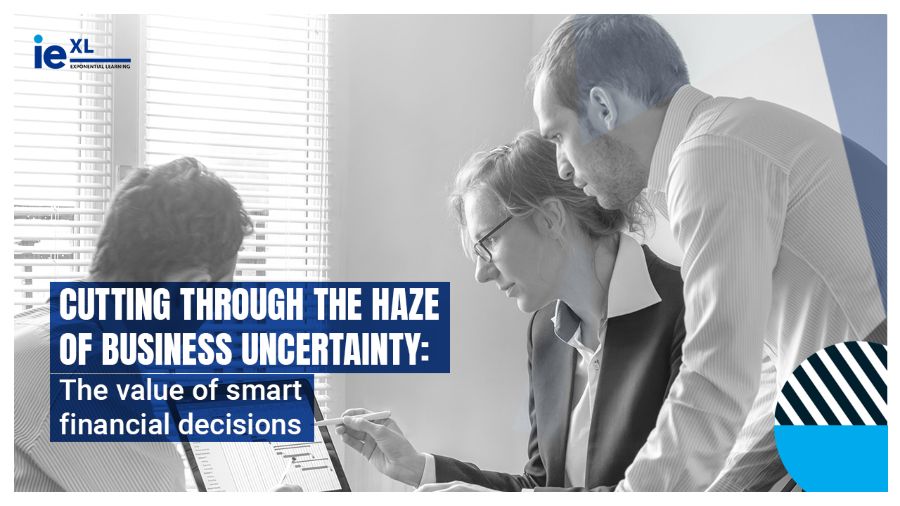Why is cash king anyway? We need it to flow freely

Cash is king: Why?
That expression, cash is king, is a frequent topic of conversation when it comes to anything accounting or finance. Why is cash so significant? Well, for one thing, that’s the ultimate goal for any corporation: cash in their bank account. It’s a company’s aspiration because it comes under investor scrutiny. Why do you ask? It’s because after enterprises like WorldCom and Enron got mired in some of the most prominent book-cooking scandals of all time, investors want to avoid getting caught in another.
The cash in a company’s bank account balance is the most valid indicator of its ability to perform. That’s because, on the asset side of your balance sheet, cash is the most liquid asset because it’s the easiest thing to turn into another asset and fast. If your company has an emergency and needs to make quick purchases or meet obligations in liabilities, the more cash you have on hand, the easier it will be for you to make those payments and shore up your company.
So, having cash is good but what about the flow part?
Let’s go back to our last point which is the fact that the real source of the information investors need to determine how well a company is doing is in the cash flow statement. It’s harder to hide cases of cooking the books and making management adjustments in a cash flow statement as opposed to your accounting. Now you know why the cash flow statement’s so vital for determining the financial health of a corporate entity, let’s break down what that statement is.
Cash flow vs. free cash flow: What’s the difference?
In Embedding Finance for Everyday Decision Making, you’ll see both cash flow and free cash flow. But, what distinguishes them? First off, to get the free cash flow, you should know the cash flow first. Cash flow is the term that refers to the cash coming and out of a company’s bank account, or in the case of a larger firm, bank accounts. Then, what’s inside of free cash flow? Free cash flow is the cash flow after the company pays all its expenses and reinvests cash into the business (AKA capital expenses).
How do find out free cash flow? First, you prepare your cash flow statement, and as the definition implies, you get the free cash flow based on the data you’ve prepared. To get the free cash flow, you first find out the cash flow from operations, then get the amount spent on capital expenses in the investing section. From there, all you need to do is subtract capital expenses from the total cash the company got in operations.
What can free cash flow tell us?
Here’s what a Forbes article says we can infer from our free cash flow. As with many integers related to accounting , we can either have a positive or a negative measure: “When free cash flow is positive, it indicates the company is generating more cash than is used to run the company and reinvest to grow the business. A negative free cash flow number indicates the company is not able to generate sufficient cash to support the business.” Think about it like this: free cash flow is like a company’s earnings, except a company’s earnings include the income statement where people can make subjective adjustments. So, just as you would examine the net income line, you can apply the same logic to measure your organization’s performance when looking at the free cash flow.
And if you’re looking for investors, here’s a tip
When you divide the free cash flow by how much the company’s worth, you get a number called the free cash flow yield. While many investors often look at the more ubiquitous price/earnings (P/E ratio), the “[f]ree cash flow yield offers investors a better measure of a company’s fundamental performance than the widely used P/E ratio.” Examining the free cash flow yield, along with the P/E ratio will let you have an even richer understanding of the numbers that prospective investors will look at, as you seek to maximize shareholder value.
Now, what’s more important: cash flow or profit?
So, the bad news is that there’s no straight answer. It all has to do with the situation a company finds itself in at a particular time. While cash flow is the cash the goes in and out of the firm, profitis the amount of money (that is if you have any) left over after you take care of your expenses using the revenue your company earns. So, when’s cash flow more important? Let’s think about it like this:
Let’s say WeWork’s making a profit month after month, but it’s also buying buildings where it was previously just leasing space. To purchase the buildings, they take on debt; they can’t afford to pay their expanding workforce because there isn’t enough cash on hand, so the cash flow turns out to be negative. Once WeWork opens that new building and filled it up with all possible rental contracts, they’ll see cash coming into the company that they can use to pay their employees cash; in this case, the cash flow becomes positive.
But, what happens if WeWork’s profits don’t go up? In that case, a negative cash flow has an adverse impact on profit, and therefore profit’s more critical that cash flow in this context. But remember, the good thing about cash is that, you can get it easily; so, Adam Neumann or Miguel McKelvey from WeWork can just get a loan to use until they’re back making profits or use their assets as capital for their business.
Ready to become a cash flow connoisseur?
If you’re eager to master the ins and outs of cash flows in the Embedding Finance in Everyday Decision Making HiOP, but want a bit more info, download your informational brochure. If you’ve already decided to join us, get started on your application right now.



